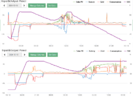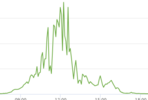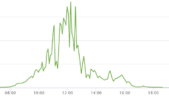The cooked food at tea time, is I would say the main problem, from 5 am to 12 noon, there are 7 hours, but from 4 pm to 1 am there are 9 hours, so it is the afternoon where the system is stretched, before noon there is no problem.
I want to do as little as possible to keep bills down. And I have to accept sometimes it is not worth the effort to gain a few p.
But the whole idea of the second battery was to reduce how often I use peak power, come April I will look to move supplier, and hopefully get paid for exported power, but the selection is not as straight forward as I thought.
For example, I heard that Octopus had excellent rates, but then found I can't have the EV rate, but can with British Gas, as I don't own an EV, and Economy 7 rates are nowhere near as good as EV rates, so not comparing like with like.
It does seem rather unfair, that those who are stuck with storage radiators have to pay so much more as those with EV's when both are using power at around the same time. As to if government or the supply companies, I don't know, but all seems to be bent in the favour of the rich, those with solar panels, batteries, and EV's. Even VIP parking spaces for EV owners.
However, I can't change what the government or supply companies offer, but I can try to use what is on offer to the best advantage. Enough battery to span off-peak to off-peak is going silly, but I use between 12 and 18 kWh per day, I can get around 7 kWh off-peak, so want between 5 and 11 kWh from solar, today I got 12.5 kWh but out of that, 4.8 kWh were exported for no payment.
The problem with this
is it does not show how much imported off-peak and how much peak. The app says yesterday cost me £1.68, without the standing charge £1.09, and I imported 10.71 kWh, so an average of 10.1774p per kWh, off-peak is 8.95p per kWh so very little peak power imported. And that it would seem down to my inverter not picking up the load fast enough.
I could have stopped my battery taking charge earlier, say 3 am instead of 5 am, and then I would have exported less. So could have reduced export by around 1.5 kWh but would have still exported 3 kWh, and talking about around 15p I could have saved, big deal, if I get it wrong and import peak, then all that gain lost.
So however flexible I get, which I could have got my legs up like her, even when younger, but seems can't realistically reduce my bill, and doing my gardening at night using off-peak power, forget it.

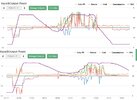 Top with 3.2 kWh battery, bottom with 6.4 kWh battery. Clearly an improvement, unlikely to run out of off-peak or solar on most days, the 3.2 kWh gave me around 5 hours after off-peak or solar stopped, but 6.4 kWh clearly around double, so most days will reach the off-peak turn on time before the battery runs out.
Top with 3.2 kWh battery, bottom with 6.4 kWh battery. Clearly an improvement, unlikely to run out of off-peak or solar on most days, the 3.2 kWh gave me around 5 hours after off-peak or solar stopped, but 6.4 kWh clearly around double, so most days will reach the off-peak turn on time before the battery runs out.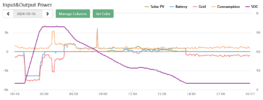 just no solar, and battery needs some solar to reach when next off-peak starts. Now I only need two hours to recharge batteries from the off-peak, so I could switch off charging two hours earlier, but with bad days I would lose out.
just no solar, and battery needs some solar to reach when next off-peak starts. Now I only need two hours to recharge batteries from the off-peak, so I could switch off charging two hours earlier, but with bad days I would lose out.

